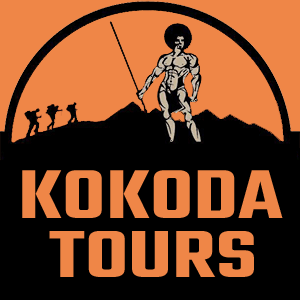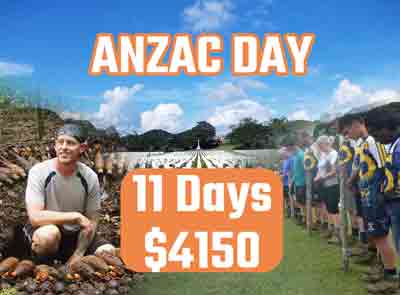Introduction
The Kokoda Track, situated in Papua New Guinea, holds a pivotal place in the military history of Australia. Among the various points along the track, Kokoda Station stands out as a symbol of resilience and bravery. In this article, we will delve into the role of both Kokoda Station and the unique Brigade Hill during the Kokoda Campaign of 1942, tracing the steps of Australian forces through PNG and highlighting the historical landmarks that dot the trek.
The Kokoda Track Campaign: Opening Stages
In July 1942, the Japanese forces aimed to capture Port Moresby, the intended endpoint of the Kokoda Trek and the capital of Papua New Guinea (PNG), for strategic reasons. The Kokoda Track, spanning 96 kilometers from Owers Corner to Kokoda, served as a crucial supply line. The Australian forces, especially the 39th Battalion, were tasked with defending this vital route of the Kokoda Trek, stretching from the North Coast of PNG to Port Moresby. The track itself is a single-file foot thoroughfare that runs through the Owen Stanley Range, offering a challenging terrain for both the Japanese and Australian troops.
Kokoda Station: An Oasis in the Jungle
As trekkers advance along the Kokoda Trail, they encounter Kokoda Station, a significant point in the campaign. Located east of Port Moresby, the Kokoda Station served as a key outpost along the Kokoda Trek for the Australians. It was at these pivotal locations along the Kokoda Trek, including Brigade Hill and Kokoda station, that the Australian forces faced fierce battles against the Japanese, marking a critical phase in the November 1942 campaign.
Battles Along the Kokoda Track (Isurava, Imita ridge, Ioribaiwa, Deniki, Efogi, Menari, Kagi etc.)
Several notable battles occurred along the Kokoda Trail, each leaving its mark on the military history of the region. Isurava, Eora Creek, Myola, Nauro, and Ioribaiwa Ridge along the Kokoda Trek witnessed intense fighting as the Australian troops engaged the Japanese forces. The Kokoda Trek, flanked by PNG’s dense jungles and challenging mountainous terrain, tested the mettle of every soldier involved, from the North Coast to Port Moresby.
The Owen Stanley Range: A Natural Barrier
The Owen Stanley Range in Papua New Guinea presented a formidable natural barrier along the Kokoda Track. Trekkers will traverse the range known as the Buna front, witnessing the breathtaking landscapes along the Kokoda Trek that once served as both a challenge and a strategic advantage during the wartime campaign.
Kokoda to Owers Corner: A Journey Through Landmarks (Goldie River to Kokoda Gap)
The trekkers’ journey from Kokoda to Owers Corner traverses some major points in the Kokoda Campaign, including the crucial Brigade Hill and the North Coast. Passing through waypoints like Deniki, Kagi, Efogi, Nauro, Menari, and Imita Ridge, trekkers following the Kokoda Trek will retrace the steps of brave Australian troops who fought to defend their homeland.
Commemorating the Fallen: War Memorials like the Kokoda Museum along the Track
Numerous war memorials dot the Kokoda Trail, paying tribute to those who lost their lives during the campaign. The Australian War Memorial, Bomana War Cemetery, and Kokoda Museum stand along the Kokoda Trek as poignant reminders of the sacrifices made by Australian and PNG soldiers who made the journey back to Port Moresby.
The Wuzzy Angels: Unsung Heroes Battling Mount Bellamy
The Fuzzy Wuzzy Angels, local Papua New Guineans who provided invaluable support to the Australian troops, played a crucial role along the Kokoda Track. Their assistance in carrying supplies and aiding the wounded endeared them to the Australian soldiers, creating a unique bond between the two groups.
Conclusion
The Kokoda Track is not merely a physical journey; it is a trek through history. As trekkers embark on the challenging route, they step into the footsteps of those who fought valiantly along the Kokoda Trail. Kokoda Station, with its historical significance, serves as a poignant reminder of the courage and sacrifice of the Australian forces during the Kokoda Campaign of 1942. The track’s lush jungles and rugged terrain echo with the stories of heroism, making it a must-explore destination for those seeking a profound connection with Australia’s military history.
Q: What is the Kokoda Track?
A: The Kokoda Track is a single-file foot thoroughfare that runs 96 kilometers across the Owen Stanley Range in Papua New Guinea.
Q: What is the significance of Kokoda Station?
A: Kokoda Station is a critical location on the Kokoda Track for Australian and Papua New Guinea interests due to its historical importance during World War II and its role in the trekking industry today.
Q: What are some important locations along the Kokoda Track?
A: Important locations along the Kokoda Track include Isurava, Menari, Imita Ridge, Ioribaiwa, Deniki, Kagi, Efogi, Eora, Brigade Hill, Myola, Ioribaiwa Ridge, Eora Creek, Nauro, Alola, Bomana, and the famous Kokoda Gap.
Q: Who were the Fuzzy Wuzzy Angels?
A: The Fuzzy Wuzzy Angels were a group of Papua New Guinean men who provided assistance to wounded Australian soldiers during the Kokoda Campaign in World War II.
Q: What role did the Australian Army play in the history of the Kokoda Track?
A: The Australian Army played a significant role in the history of the Kokoda Track, as they were involved in the Kokoda Campaign during World War II, battling against the Japanese forces to defend Australia’s interests.
Q: How long is the Kokoda Track?
A: The Kokoda Track is a single-file foot thoroughfare that runs 96 kilometers across the Owen Stanley Range in Papua New Guinea.
Q: What is the terrain like along the Kokoda Track?
A: The terrain along the Kokoda Track is challenging, with steep ascents and descents, dense rainforest, and river crossings, making it a physically demanding trekking experience.
Q: Are there any airstrips along the Kokoda Track?
A: Yes, there are airstrips located at various points along the Kokoda Track, providing access for trekkers and local communities.
Q: What is the history of the Kokoda Track?
A: The Kokoda Track gained historical significance during World War II as the site of the Kokoda Campaign, a crucial battleground between Australian and Japanese forces, and it is now a popular trekking destination.
Q: How can I learn more about the Kokoda Track?
A: To learn more about the Kokoda Track, you can visit historical sites, museums, and memorials along the track, as well as engage with local guides and communities to gain insights into its rich history and cultural significance.




